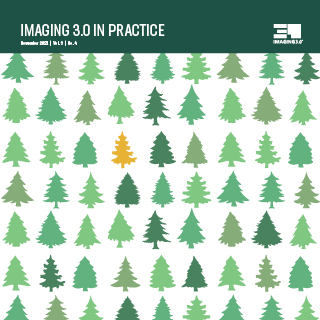Click to Download the Full Issue and Resources
The comprehensiveness of imaging continues to expand at a dizzying pace. While these sophisticated tools have dramatically improved disease detection, they have also increased the number of findings unrelated to the ordering physician’s clinical question — what we call incidental findings.
The radiology community has developed guidelines and appropriateness criteria to assist radiologists in making follow-up recommendations for incidental findings without subjecting patients to unnecessary care. But in many cases, those recommendations languish without appropriate action, potentially leaving patients at risk for untreated malignancies. In other cases, clinicians struggle to explain the implications of incidental findings, which can cause patients anxiety.
As we consider ways to address these issues and better handle incidental findings, we can learn from radiologists who have implemented successful incidental-findings programs. Some of these efforts are highlighted in this issue. They include sending letters directly to patients to encourage appropriate follow-up of incidental findings, consulting with patients and their referring providers to explain primary and incidental findings, and leveraging artificial intelligence to detect relevant incidental findings in CT exams that radiologists might otherwise miss.
But the brilliance of these individuals is less in their specific solutions and more in the methods they used to arrive at those solutions: clarifying the problem they are trying to solve, understanding root causes before jumping to solutions, testing and revising their solutions as they are developed, and making adjustments when and after the solutions are implemented.
Every healthcare environment is unique. We hope that these examples will give you ideas about how to overcome the challenges of managing incidental findings at your institution. But more important than the specific solutions, I encourage you to adopt the problem-solving mindset that each of these cases exemplifies.
 David B. Larson, MD, MBA
David B. Larson, MD, MBA
Chair, ACR Commission on Quality and Safety
